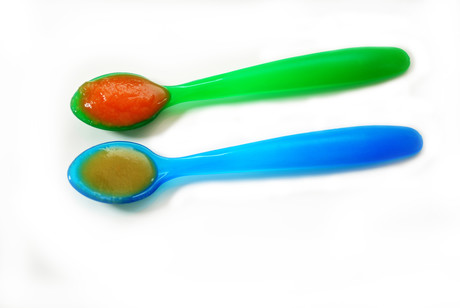Ready-to-use therapeutic food for Indian children

Ready-to-use therapeutic food (RUTF) is a high-calorie, nutrient-dense paste that is the most widely used outpatient treatment for severe acute malnutrition. RUTF has seen success in many African countries but it has failed to get the same foothold in India due to issues with palatability, reliability of water supply and cost.
Severe acute malnutrition is estimated to affect roughly 20 million children worldwide each year, including 8 million in India. The fatality rate approaches 30%. Current treatment options are limited to expensive nutrition programs in hospitals, and the existing RUTF formula, Plumpy’Nut, made by French company Nutriset. Plumpy’Nut is a heavy, viscous paste made primarily from milk powder, peanut butter, oil and sugar. While the efficacy of this formula is scientifically proven, it has met with several barriers to adoption in India. The biggest problem is that Indian children do not have peanut butter as part of their usual diet and simply do not like Plumpy’Nut.
Children suffering from severe acute malnutrition must complete a six-week course of treatment, meaning they will eat more than 100 consecutive meals of RUTF. Reports from Sion Hospital in Mumbai indicate that many children consume only one-third of the required amount. And there is another catch: due to concerns about contamination and waterborne illness, children are instructed not to drink water while using RUTF. This rule protects the producers and distributors of the food from liability, even as it is impossible to comply with, since the RUTF has a dry and oily consistency.
Also, at about 30 rupees/meal, Plumpy’Nut is more than twice what many poor families typically budget for food.
Now, MIT Tata Fellow and a PhD candidate Tonghan Gu, and T Alan Hatton, the Ralph Landau Professor in the Department of Chemical Engineering, are working on a new RUTF formula that uses local ingredients to increase palatability for Indian children. This new formulation can be powdered and spray-dried to make transportation and storage easy, and it is affordable in the poor communities where severe acute malnutrition is most prevalent.
“We are trying to make something more like a milkshake,” Gu said. “It’s a mix of high-energy components, using local foods like chana dal [chickpeas]. We can even add spices to create different flavours. We’ve found that children really like the drinkable version.”
Hatton and Gu’s proposed formula is designed to agree with the local palate, using ingredients and flavours that children are already accustomed to eating, and the ability to further customise with spices means that the RUTF can be adapted to regional tastes within India. Its low-viscosity, milkshake-like consistency makes consumption easier for infants and toddlers.
After a successful pilot scale demonstration in Mumbai using locally sourced foods and the milk from Shree Char Bhuja Dairy, the researchers believe moving to industrial scale is feasible. “From a scientific and engineering perspective, we have resolved the essential problem of stabilising these oil droplets for long-term shelf life,” Hatton said. “Now we’re moving into the next phase of manufacturing and marketing.”
For mass production, they use a colloid mill to homogenise the ingredients. Then, through spray-drying, the droplets of liquid oils and micronutrients are micro-encapsulated inside solids, resulting in a dry powder. The mixture can be reconstituted on-site with milk or clean water, requiring only 30 seconds of stirring by hand.
“There is not much difficulty in producing the microcapsules, which have been commercialised for other applications. The difficulty is to restrict the choices of solid components — essential for the stability of the dry powder — to affordable local agricultural products, instead of more expensive artificial additives,” said Gu.
Thanks in part to wholesale purchasing of local ingredients, Gu expects the price per meal to be significantly lower than the existing RUTF, removing another critical barrier to adoption.
But some obstacles remain, such as gaining government approval, conducting a clinical trial in a hospital, and solving what Gu calls “the water dilemma”. Just as with the existing RUTF, it’s important for it to be consumed along with clean water — not an easy task in many parts of India where both piped water and groundwater supplies may be contaminated.
“The best-case scenario is if they can reconstitute the RUTF with milk, which is widely available,” Gu said. “The cow acts as a kind of filter.”
The MIT team is collaborating with researchers at the Indian Institute of Technology in Bombay to finalise the formula and overcome the implementation challenges.
Food creations on the shelf for shaping up and flying away
As we start into summer, there have been some interesting dairy creations hitting the shelves for...
Six on the shelf: Summer treats by the block load
Summer treats hitting the supermarket shelves include truffles by the block, ice creams for road...
What's new on the shelf
From classic reinspired ice cream to West African flavours in a jar and whiskey aged in a gaol,...








